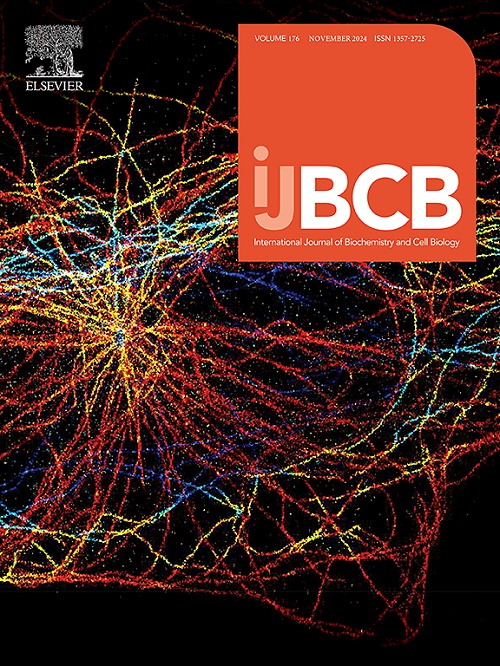Transcriptomic and in silico analysis of BLACE (B-cell acute lymphoblastic leukemia expressed), a new non-coding RNA, as a diagnostic biomarker in B-cell ALL
IF 2.8
3区 生物学
Q2 BIOCHEMISTRY & MOLECULAR BIOLOGY
International Journal of Biochemistry & Cell Biology
Pub Date : 2024-11-19
DOI:10.1016/j.biocel.2024.106698
引用次数: 0
Abstract
ALL (acute lymphoblastic leukemia) is a type of hematological malignancy that involves developmental and differentiation arrest at the lymphoblast stage. BLACE, a gene specifically expressed in B-cell acute lymphoblastic leukemia shows little or no expression in mature B-lymphocytes. The current pilot study involves transcriptional analysis of BLACE in B-cell ALL patients. Expression of BLACE was high in both pediatric and adult ALL patients. Promoter analysis of the BLACE gene showed the presence of CAAT and TATA box promoters and G-rich sequences with a potential to form G-quadruplexes. Due to identification of TAL1 transcription factor binding sites within the BLACE promoter region, expression of TAL1 gene was measured and found to correlate with the BLACE expression. The presence of an overlapping G-rich sequence and TAL1 binding site at −1291 bps within BLACE promoter indicated a new target site for controlling BLACE expression. The docking studies performed between BLACE-TAL1 protein showed a binding score of −208.68 kcal/mol and identified 21 BLACE nucleotide - TAL1 residues interacting at the docking interface. Together, our findings suggested that BLACE gene specifically expressed in B-cell ALL could serve as a new therapeutic target. Further investigations are required to get a comprehensive understanding of the BLACE gene mechanism.
将一种新的非编码 RNA--BLACE(B 细胞急性淋巴细胞白血病表达)作为 B 细胞 ALL 的诊断生物标记物的转录组学和硅学分析。
急性淋巴细胞白血病(ALL)是一种在淋巴母细胞阶段出现发育和分化停滞的血液恶性肿瘤。BLACE是一种在B细胞急性淋巴细胞白血病中特异表达的基因,在成熟的B淋巴细胞中几乎没有表达。目前的试点研究涉及对 B 细胞 ALL 患者的 BLACE 进行转录分析。BLACE在儿童和成人ALL患者中的表达量都很高。BLACE基因的启动子分析表明存在CAAT和TATA盒启动子以及富含G的序列,有可能形成G-四联体。由于在 BLACE 启动子区域发现了 TAL1 转录因子结合位点,因此对 TAL1 基因的表达进行了测定,结果发现其与 BLACE 的表达相关。在 BLACE 启动子的 -1291 bps 处存在一个重叠的富含 G 的序列和 TAL1 结合位点,这表明存在一个控制 BLACE 表达的新目标位点。BLACE-TAL1蛋白之间的对接研究显示,其结合得分为-208.68kcal/mol,并确定了21个BLACE核苷酸-TAL1残基在对接界面上相互作用。我们的研究结果表明,B细胞ALL中特异表达的BLACE基因可作为新的治疗靶点。要全面了解BLACE基因的作用机制,还需要进一步的研究。
本文章由计算机程序翻译,如有差异,请以英文原文为准。
求助全文
约1分钟内获得全文
求助全文
来源期刊
CiteScore
8.10
自引率
0.00%
发文量
124
审稿时长
19 days
期刊介绍:
IJBCB publishes original research articles, invited reviews and in-focus articles in all areas of cell and molecular biology and biomedical research.
Topics of interest include, but are not limited to:
-Mechanistic studies of cells, cell organelles, sub-cellular molecular pathways and metabolism
-Novel insights into disease pathogenesis
-Nanotechnology with implication to biological and medical processes
-Genomics and bioinformatics

 求助内容:
求助内容: 应助结果提醒方式:
应助结果提醒方式:


